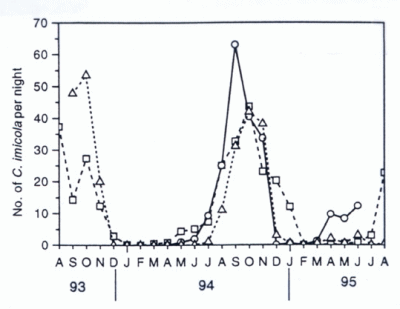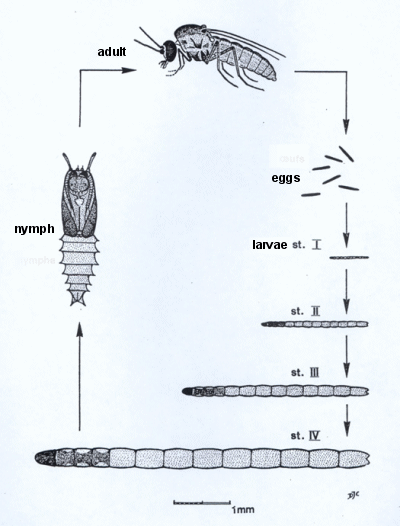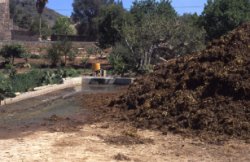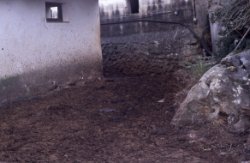Culicoides midges – Lifecycle
In most Culicoides species the lifecycle is poorly understood. During summer the development from egg to adult takes a couple of weeks. Some larvae and pupae are overwinter in protected breeding places and continue development in warmer weather.
Seasonal distribution of Culicoides

Seasonal distribution of Culicoides imicola
Bluetongue infections
The epidemiology of bluetongue infection is closely related to the biology of the vector. It is therefore a seasonal disease generally observed in late summer and early autumn. Virus transmission begins in the early spring with the onset of insect flight activity and continues until the first hard frosts.
Biology of the midge
Culicoides species are holometabolic (undergo complete metamorphosis). The adult midges usually live for about 20 days, depending on ambient conditions they can live for more than 90 days. The adults fly and copulate in swarms.
The female midges require blood meals for the maturation of their eggs. Between 100 and 200 eggs are usually laid in areas with a specific humidity and abundant organic material. Development from egg to adult usually takes about 15 days but can be up to up to 7 months during the overwintering period.

Diagram representing the lifecycle of Culicoides spp.
Habitat
The midges breed in moist conditions in a variety of habitats, particularly damp, muddy areas and in faecal and plant matter. Modification of these areas by removing organic matter and draining muddy areas, form an important part of the control strategy for Culicoides.
The types of areas shown below for ideal breeding environments for the midges.



